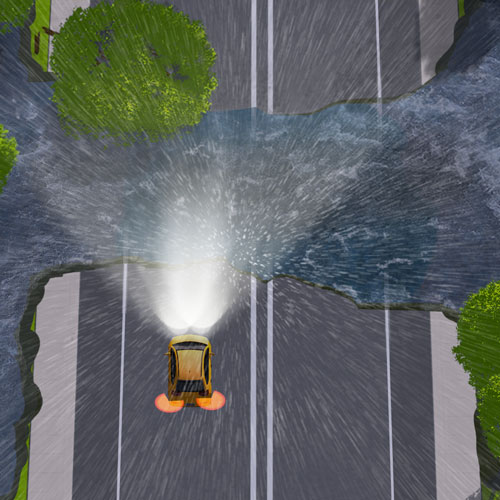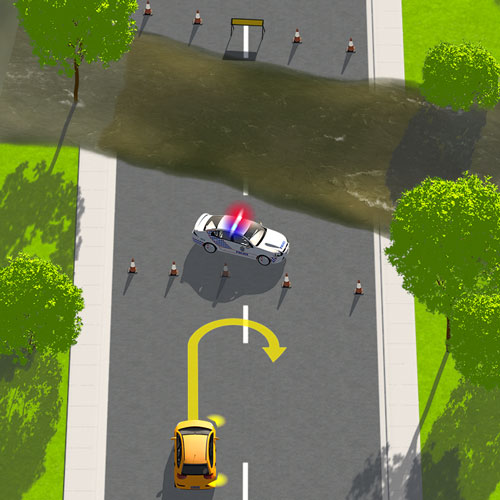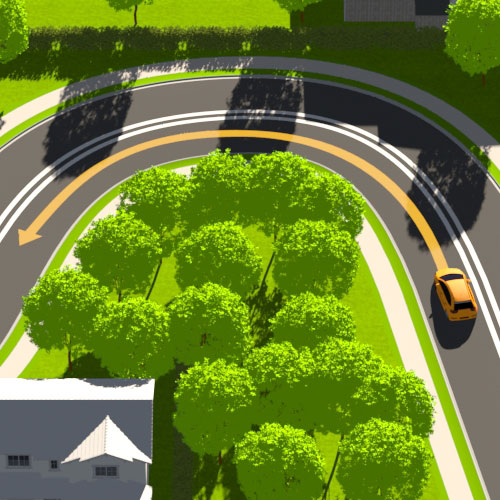
Hazard perception
Hazard perception is the ability to scan your environment and recognise a hazard before you reach it so you can respond safely if required.
Hey! It looks like you've lost your internet connection. A stable connection is required to access this content. Please reconnect to continue where you left off.
A hazard can be a situation like a flooded or winding road, a child playing near a road, or an animal on the road.

Hazard perception is the ability to scan your environment and recognise a hazard before you reach it so you can respond safely if required.
Don’t just watch the car in front of you! Looking more than one vehicle ahead will improve your ability to respond to hazards. Be prepared to react to things like brake lights or indicators. If the traffic ahead of you is reacting- you will have time to do so too.
Tragically, Queenslanders continue to lose their lives by driving through floodwaters. Floodwater is unpredictable—it may be deeper and faster flowing than it appears.
What looks safe can quickly escalate into dangerous conditions.

The moment you drive through floodwaters you give up control. It takes very little water to sweep a car away. You should be alert for changed road conditions.
It doesn't matter what vehicle you drive, how well you know the road, or how passable the water looks—if it's flooded, forget it.
Always drive to the speed limit and conditions so you can respond safely. Click on the following link to learn more about driving safely in wet weatheropen_in_new.
Travelling on some sections of road will result in you having reduced visibility of what is ahead. When you can’t see what’s ahead, adjust your speed and be prepared to respond safely.

Winding roads and roads with long or steep descents are potential hazards. You will need to adjust your driving to suit the conditions.
Pedestrians can be hard to see.
Children in particular can be unpredictable so scan suburban streets and keep an eye out for them. They could run out in front of you!
Whether driving in the suburbs or in the country, you are likely to encounter animals both on the road and at the side of the road.
You should always watch for animals on the side of the road because they can cross the road without warning. If you see an animal on or on the side of the road, slow down to give yourself the best chance of responding to it safely.
Inexperienced drivers are not as good at recognising and responding to hazards as experienced drivers.
Practice makes perfect! The more you drive, the more you'll get the hang of recognising and responding to hazards.
When you're a passenger next, talk to whoever is driving about how they perceive hazards.
You've reached the end of .
Next up is
You've reached the end of which completes Hazardous Situations.
Update your browser to view this website correctly. Update my browser now